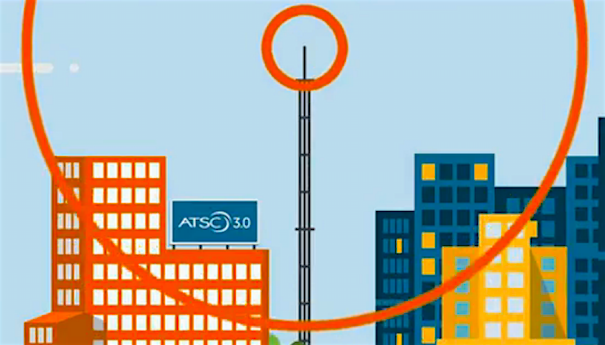Routing systems
Dictionary.com defines a system as “a group of interacting, interrelated or interdependent elements forming a complex whole.” In the context of broadcast and television hardware, routing systems have become interactive, interrelated, interdependent and certainly complex. It is not unusual to find IT-based control solutions that bridge the gap between having pieces and parts from many manufacturers, each selected to achieve specific system goals and woven together into a seamless whole from the perspective of the operator.
Telefónica, located in Madrid, Spain, provides cable television services and employs routers from PESA.
The concept is not new. In the late 1980s, I visited London's ITN, where an early windows interface controlled the routing system, treating it like a virtual drawing with drag and drop implementations for “electronic patching.” Modern systems may well have drawn on those and other innovative implementations and have layered high-tech IT approaches to the issues of control.
Complexity is a major problem in modern facilities. Because routing often touches nearly all facets of the business, in many facilities it is clear that managing that complexity is critically important. Building a plant that is inexplicable and controllable only by cognoscenti who have the television equivalent of an advanced degree is poor design. Adding control panels and smart screens that provide the operator with a manageable selection of options is critical.
It is equally important that the control system allow the flexibility to layer the best from many manufacturers into the seamless whole. For instance, TDM audio switching is growing in importance, in part due to the ability of many such audio routing switchers to accept analog or digital inputs and freely route them to any output. However, there are manufacturers who make those products without great match-ups in RS-422 and video switching options. The conclusion might be to find an acceptable set of compromises by limiting the amount of deployed technology, but if the control system can interface to all of the elements, the issue is moved to the operator interface plane, where issues are easier today.
Generally, routing is moving to a more flexible signal interface. In the last six months, many products have emerged that have auto-sensing inputs that accept everything from analog video, through SMPTE 259M and SMPTE 292M HDTV baseband signals. Just as TDM switches are revolutionizing audio system design, a flexible and wideband router using this technology would be a major building block in station rebuilds where existing analog facilities must be updated. As it stands, a layered approach can be created with wideband digital routing and a layer of composite analog combined by the control system to look like a single router. The operator does not need to know that he is switching analog crosspoints or digital crosspoints, or even that via path finding he is switching both. A “unisex” analog/digital router could bring great simplicity to the design of modern plants and permit flexible use in the future.
Perhaps a word about layers, sizing and wide bandwidth would be useful. Many manufacturers have designed “future-proof” routers by making them wide-bandwidth, covering as much as from below 19Mb/s to at least SMPTE 292M at 1.485Gb/s. This is a great idea, but it also leads to the temptation to build large monolithic router systems when smaller islands would suffice. Most broadcast stations can easily live in 32×32 to 64×64 for HDTV capability for several more years, and most need 128×128 SD or less. A single 256×256 router would cover both and could perhaps be “short loaded” to keep cost down.
The professional video industry's #1 source for news, trends and product and tech information. Sign up below.
But the 256×256 frame represents 65,536 crosspoints, where the smaller layered router approach would amount to 20,480 crosspoints and achieve the same thing at lower cost. The control system can make both look identical, and it is nonsense to maintain that ultimate flexibility is worth the cost without carefully considering the likely growth pattern that is expected. It will be a long time before HDTV system rebuilds begin in most markets. The layered approach also permits installation in small facilities to proceed without the inclusion of nearly as many analog conversion devices (both directions), by admitting composite analog is here for a long time and instituting a layer that deals with analog devices that can and should stay analog. Here again, complexity is reduced, and signal integrity is maintained. Building a digital plant by converting all of the composite analog signals to digital using less than stellar converters is not improving quality by converting to digital.
When selecting a new routing system, it is important to consider the capabilities of the staff who must (presumably) run and maintain it. Sales demonstrations make router programming and operation look pretty simple. I have seen our staff struggle with new control systems as they are introduced and we implement them for customers for the first time, and it “ain't pretty” … sometimes. The move to IT-based systems means that the long-term care and feeding of the system must be done by those who have training sufficient to understand the failure modes and how to at least get around them. Manufacturers offer in-depth training, but make sure that those attending are up-to-speed on IP addressing, data routing, VNETs and such. Without that layer of base knowledge, you will end up with disconnects and a lot more long-distance charges troubleshooting minor misunderstandings.
The future will certainly hold much change, as it always does. Look for slow movement to IT interfaces carrying content streams in the same way our friendly BNC connector analog and digital video systems do today. High bandwidth copper and fiber interconnections are inherently as reliable as our usual interconnection strategies, and they are bidirectional as well.
John Luff is senior vice president of business development for AZCAR. To reach him, visitwww.azcar.com.
Send questions and comments to:john_luff@primediabusiness.com
